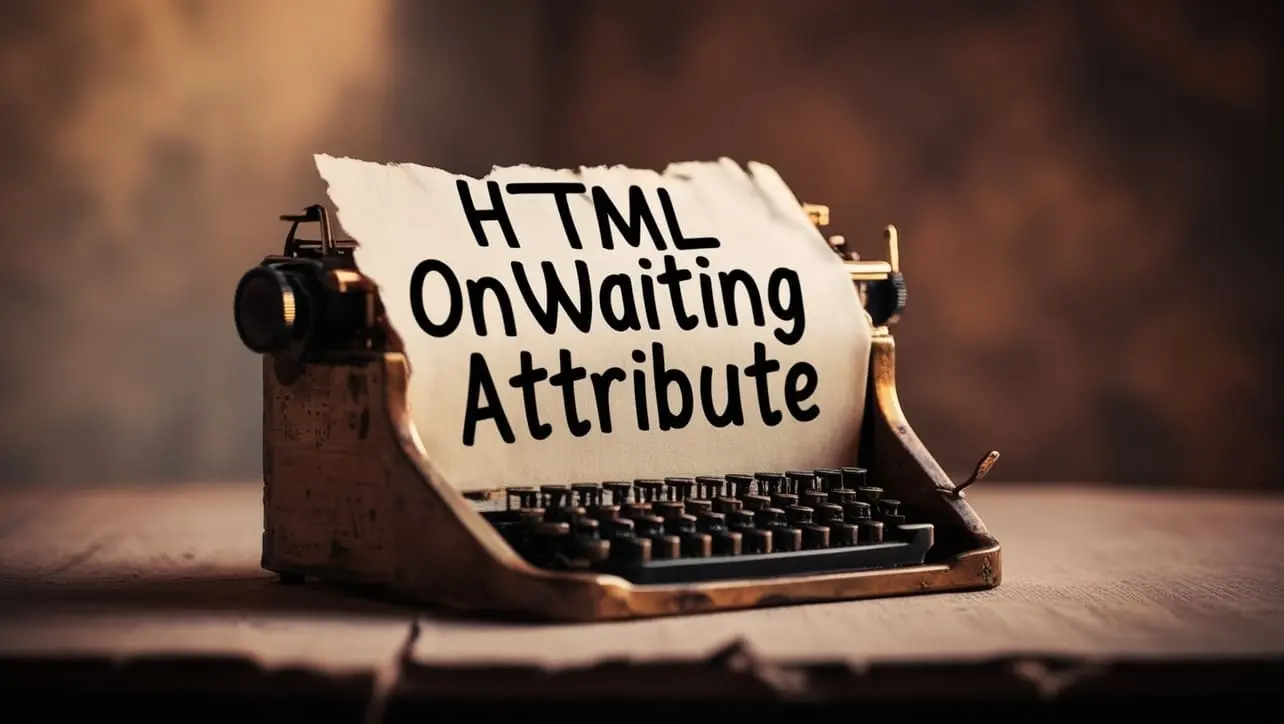
HTML Topics
- HTML Intro
- HTML Basic
- HTML Editors
- HTML CSS
- HTML Tags
- HTML Deprecated Tags
- HTML Events
- HTML Event Attributes
- HTML Global Attributes
- HTML Attributes
- abbr
- accept
- accept-charset
- accesskey
- action
- align
- alt
- archive
- as
- async
- autocapitalize
- autocomplete
- autofocus
- autoplay
- axis
- bgcolor
- border
- cellpadding
- cellspacing
- char
- charoff
- charset
- checked
- cite
- class
- classid
- codebase
- codetype
- color
- cols
- colspan
- compact
- content
- contenteditable
- controls
- coords
- crossorigin
- data
- data-*
- datetime
- declare
- default
- defer
- dir
- dirname
- disabled
- download
- draggable
- enctype
- enterkeyhint
- for
- form
- formaction
- formenctype
- formmethod
- formnovalidate
- formtarget
- frame
- frameborder
- frameset
- headers
- height
- hidden
- high
- href
- hreflang
- hspace
- http-equiv
- id
- inert
- inputmode
- ismap
- kind
- label
- lang
- list
- loop
- low
- max
- maxlength
- media
- method
- min
- multiple
- muted
- name
- novalidate
- onabort
- onafterprint
- onbeforeprint
- onbeforeunload
- onblur
- oncanplay
- oncanplaythrough
- onchange
- onclick
- oncontextmenu
- oncopy
- oncuechange
- oncut
- ondblclick
- ondrag
- ondragend
- ondragenter
- ondragleave
- ondragover
- ondragstart
- ondrop
- ondurationchange
- onemptied
- onended
- onerror
- onfocus
- onhashchange
- oninput
- oninvalid
- onkeydown
- onkeypress
- onkeyup
- onload
- onloadeddata
- onloadedmetadata
- onloadstart
- onmousedown
- onmousemove
- onmouseout
- onmouseover
- onmouseup
- onmousewheel
- onoffline
- ononline
- onpagehide
- onpageshow
- onpaste
- onpause
- onplay
- onplaying
- onpopstate
- onprogress
- onratechange
- onreset
- onresize
- onscroll
- onsearch
- onseeked
- onseeking
- onselect
- onstalled
- onstorage
- onsubmit
- onsuspend
- ontimeupdate
- ontoggle
- onunload
- onvolumechange
- onwaiting
- onwheel
- open
- optimum
- pattern
- placeholder
- popover
- popovertarget
- popovertargetaction
- poster
- preload
- readonly
- rel
- required
- reversed
- rows
- rowspan
- sandbox
- scope
- selected
- shape
- size
- sizes
- span
- spellcheck
- src
- srcdoc
- srclang
- srcset
- start
- step
- style
- tabindex
- target
- title
- translate
- type
- usemap
- value
- width
- wrap
- HTML Comments
- HTML Entity
- HTML Head
- HTML Form
- HTML IndexedDB
- HTML Drag & Drop
- HTML Geolocation
- HTML Canvas
- HTML Status Code
- HTML Language Code
- HTML Country Code
- HTML Charset
- MIME Types
HTML onwaiting Attribute

Photo Credit to CodeToFun
🙋 Introduction
The onwaiting attribute is a valuable feature in HTML that allows developers to specify a script to run when a media element is waiting for data.
This attribute is particularly useful for handling events related to multimedia content, providing developers with control and flexibility in managing user interactions during buffering or loading periods.
🎯 Purpose of onwaiting
The primary purpose of the onwaiting attribute is to define a script that should be executed when a media element, such as an <audio> or <video> tag, enters the "waiting" state.
The "waiting" state occurs when the media is buffering, and playback is temporarily halted while the content is being loaded.
💎 Values
The onwaiting attribute accepts JavaScript code as its value.
This code will be executed when the media element transitions into the "waiting" state.
Developers can use this feature to perform actions such as displaying loading indicators, providing user feedback, or triggering custom behaviors.
📄 Example
Let's look at a simple example of how to use the onwaiting attribute with a video element:
<video controls onwaiting="handleWaiting()">
<source src="example.mp4" type="video/mp4">
Your browser does not support the video tag.
</video>
<script>
function handleWaiting() {
// Custom code to handle waiting state
console.log("Video is waiting for data. Display loading spinner, for example.");
}
</script>🧠 How it Works
In this example, the onwaiting attribute is set to call the handleWaiting JavaScript function when the video element enters the "waiting" state.
🔄 Dynamic Values with JavaScript
Similar to other event attributes, you can dynamically set the onwaiting attribute using JavaScript.
This allows for more flexibility and responsiveness in handling waiting events based on dynamic conditions. Here's an example:
<script>
// Dynamically set onwaiting for a video element
document.getElementById("dynamicVideo").onwaiting = function() {
// Custom code to handle waiting state dynamically
console.log("Video with dynamic ID is waiting for data.");
};
</script>🧠 How it Works
In this script, the onwaiting attribute is dynamically set for a video element with the ID dynamicVideo.
🏆 Best Practices
- Use the
onwaitingattribute to enhance user experience during buffering periods by providing feedback or triggering specific actions. - Keep the JavaScript code within the
onwaitingattribute concise and focused on handling waiting events to maintain code readability. - Test the implementation across different browsers to ensure consistent behavior.
🎉 Conclusion
The onwaiting attribute is a powerful tool for handling waiting events in multimedia content.
By leveraging this attribute, developers can create more interactive and responsive user experiences when dealing with buffering or loading scenarios.
👨💻 Join our Community:
Author

For over eight years, I worked as a full-stack web developer. Now, I have chosen my profession as a full-time blogger at codetofun.com.
Buy me a coffee to make codetofun.com free for everyone.
Buy me a Coffee












If you have any doubts regarding this article (HTML onwaiting Attribute), please comment here. I will help you immediately.